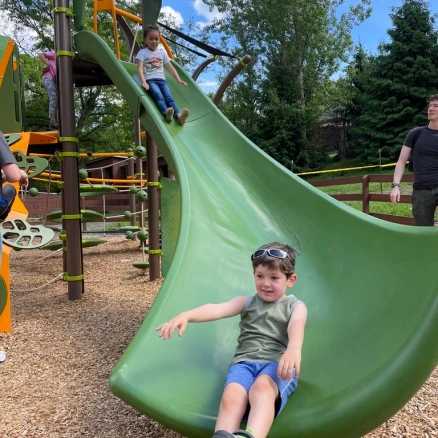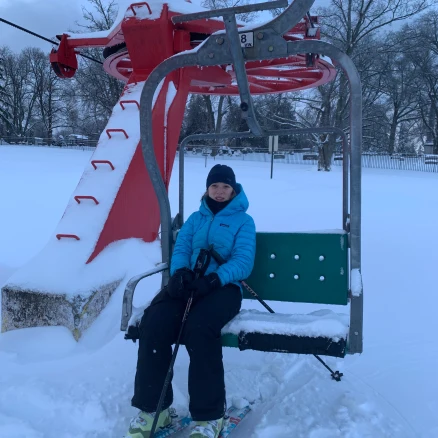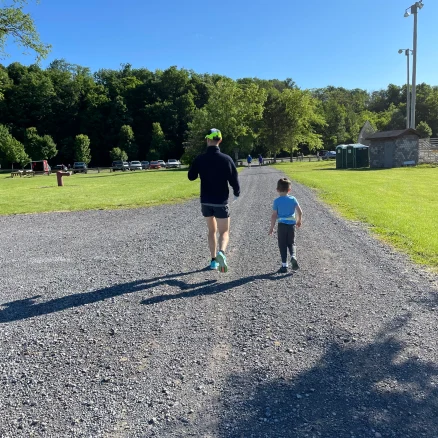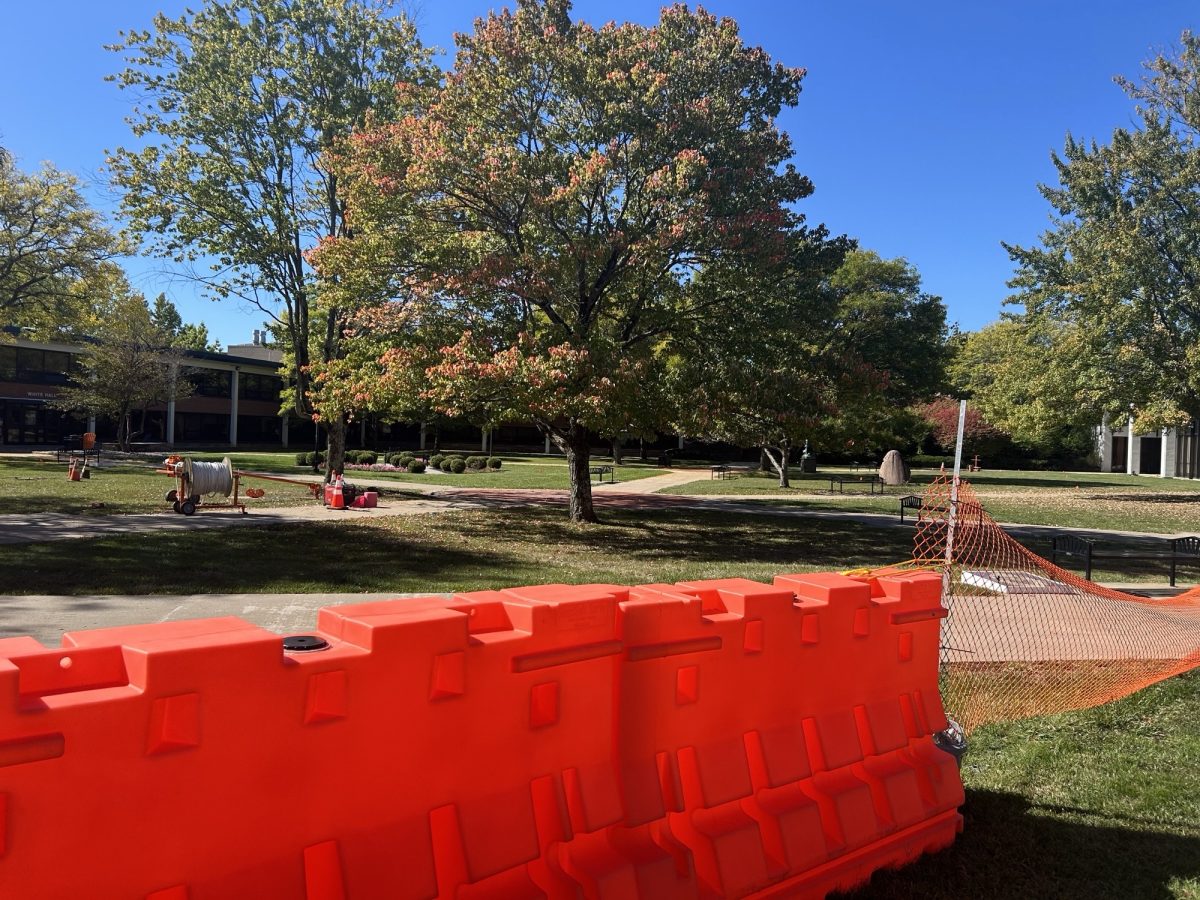Utica resident Heather Wasielewski wasn’t always an outdoors person, but when she met her now husband Zac, things changed. He introduced her to enjoying nature—a part of her life she took for granted until then. When she had a son, the outdoors became a place of refuge because there aren’t many things for moms to do with their children in Utica.
“Parks are huge for that aspect,” Heather said. “We spent the first 5 years of his 7 [years] in parks.”
Wankel Park, one of the only parks with a traditional cooling pool, is just down the road from their home.
“It’s this little treasure because you can take the kids down there and they run through it and ride their little bikes through it,” Heather said.
Both Heather and Zac are medicated for and struggle with anxiety and consider the outdoors vital for their well-being.
“People talk about being in the moment and it helps a lot because when you’re in some kind of nature, you’re typically not staring at your phone, you are paying attention to your surroundings more and it takes your focus outward rather than inward,” Zac said.
According to a recent report conducted by Urban Institute, communities with higher levels of green space and tree cover use less mental health services and treatments. Evidence showed that proximity to and use of parks, green space, and tree cover correlate to greater levels of physical activity.
In the Utica Parks and You multimedia project, Utica University journalism students examined how city parks are essential to a community’s identity and well-being. Because Utica’s parks are sprinkled throughout the city and each provides different experiences, many local residents said they are vital to their survival and health.
The Urban Institute report said proximity and exposure to trees and greenery can positively impact mental health by providing psychological relaxation and stress alleviation.
“Outdoors takes away a lot of the social and personal issues that lead to the anxieties,” Zac said.
Mental health is a priority for local residents
A 2022 health assessment conducted by the Oneida County Health Department, Rome Health and the Mohawk Valley Health System revealed that:
- 40.5% of respondents said someone in their home struggled with depression and anxiety
- 52% of respondents said they spend less than 30 minutes a day exercising or performing some physical activity
- More than 60% of participants in the online survey ranked mental health as a top priority for Oneida County
The Wasielewskis reliance on nature for mental peace and clarity isn’t a new finding. According to the National Park Service, a walk in the park is a great way to help physical and mental health. Vast amounts of evidence document the health benefits, ranging from reduced anxiety and depression to improved birth outcomes.
Parks allow parents and kids to socialize and they offer a variety of activities to engage in. Kids get excited about the different things each park has to offer, Heather said. Seven-year-old Caz Wasilewski loves playgrounds and playing freeze tag with his friends.

“I usually first go to the slide,” Caz said.
“When he’s not outside enough, he gets grumpy,” Heather said.
“Parks give you a low risk way to allow kids freedom where they feel like they’re free but you still have enough of a safety net that you can let them go and wander and nothing’s going to happen,” Zac said.
The Switchbacks 1.8 mile loop trail at Roscoe Conkling Park is a popular destination for the Wasielewskis.
“We cross country ski, take downhill skis and play through the woods,” Heather said. “There’s an adventure right up at the Switchbacks. It’s a whole area of fun that people just don’t get to.”
Utica parks a “huge benefit” and “huge responsibility”
Roscoe Conkling Park is 385 acres and includes recreational activities such as a ski center, tennis courts, a golf course, the South Woods that house a pavilion center and the Switchbacks and the Utica Zoo. A portion of the park is currently under construction and the city is working on adding an ice skating rink this winter, which will transform into a pickleball court during the summer.

Parks and Recreation Commissioner David Short said Utica is one of five cities in the county that has a ski slope right in the middle of it. Utica has 21 different city, district, neighborhood and passive parks. Each park has different capabilities, but they all have green space.
“They’re a huge benefit to the residents for mind and body but they’re a huge responsibility to maintain,” Short said.
Utica’s park system has grown in acreage throughout the years with more amenities being added that need maintenance and upkeep, but the Parks and Recreation Department has employed the same amount of people from 1968 to 2023. Eighteen employees are responsible for keeping the parks and ball courts mowed and litter-free.
Utica’s Parks and Recreation Department is not alone in maintaining and beautifying the parks. GreenUtica and Olmsted City help maintain the parks and parkway by planting trees and thousands of plants. GreenUtica has done more preservation focused projects while Olmsted City has done projects like installing benches and restoring park features including the Lily Pond at Thomas R. Proctor Park.
“[Olmsted City] really opened up a connection with the city with that whole project of redoing our water fountains, redoing walkways, putting pretty plants up,” Heather said. “People don’t want to go to broken down parks. They want to go to something nice. It’s up to the city to make it happen.”
American Rescue Plan Act (ARPA) funding received during COVID is helping to revitalize many Utica parks, including a $2 million makeover for Chancellor Park, the city’s first park. The city also designated $150,000 of the ARPA funds for new playground equipment, $7.8 million for Roscoe Conkling Park and $850,000 for a splash pad at Thomas R. Proctor Park.
Let’s get physical
All of Utica parks combined offer more park acreage than New York City’s Central Park and lots of green space to keep Utica residents’ mental and physical health balanced.
Zac trail runs in the parks year-round, at least once or twice a week. He said physical activity in the park allows him to put everything else aside and focus on the experience around him, “rather than the thoughts that are flying around in my head.”

“It redirects my attention from me to outwards,” Zac said. “When you’re out in nature somewhat, it helps you to just forget the little pestering anxieties that are bringing you back to thinking.”
The World Health Organization says anxiety disorders are the most common of all mental disorders.
Heather said neighborhood parks also offer a space especially for low income families, who don’t have much money for entertainment, to gather and play and cook outside if grills are available.
Sometimes kids walk to a park without their parents, and Zac said it’s a relatively safe place for kids to socialize and play.
“Parks give you a low risk way to allow kids freedom where they feel like they’re free but you still have enough of a safety net that you can let them go and wander and nothing’s going to happen,” Zac said.
“A plant needs water and we’re a family, with my son, that needs to be outside,” Heather said. “And we sometimes have to remind ourselves about how important it is. That’s why parks are important.”






































































































































